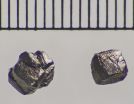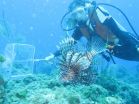Bad news for kids
Parents do not defend their offspring at all cost
2014-11-24
(Press-News.org) The degree to which parents sacrifice themselves for their children depends on a variety of factors. On the one hand nest predators pose a threat to the young and the parent birds. But also the time of hatching plays a role. Earlier studies have shown that birds born late in the season are more likely to be protected by their parents, as the adult birds often do not have the chance to produce replacement clutches. Older offspring also tend to be protected more readily than younger ones, as much more parental care and energy have already been invested.
"Studies on the risk behaviour of birds already exist. But there are only a few in which several factors have been investigated at the same time. We are upon the first showing how parents respond to more or less dangerous predators when defending offspring of different ages in the field says first author Katharina Mahr.
Risk research using predator models
Together with Herbert Hoi from the Konrad Lorenz Institute of Ethology they observed blue tit parents defending their nestlings aged between five and twelve days. The parents were confronted with different predators of varying threat levels. A stuffed sparrowhawk represented a predator with great risk to adult blue tits. A sparrowhawk is not considered dangerous for very young blue tits, as it cannot reach into the nest-box. However, sparrowhawks become more relevant predators for older nestlings. A rubber snake represented a predator of medium risk. Snakes are very dangerous for the young, but due to their low mobility represent a low risk to parents. A stuffed woodpecker was used as a third predator. Woodpeckers are able to open nest-boxes and therefore represent the greatest danger to very young nestlings, but not to older juveniles.
When exposed to a snake, blue tit parents attacked the predator. Since alarm calls against snakes have little effect, as snakes don't hear those calls, parents rather attack the enemy. Furthermore, snakes are less mobile than birds. A targeted attack is therefore the best choice with the lowest risk for the parents.
Direct attacks on predators are, according to Mahr, the riskiest behaviour bird parents can exhibit. When exposed to the sparrowhawk or the woodpecker, the parents neither attacked nor approached the predators. Instead, the parents responded with loud alarm calls. "Attacking a sparrowhawk is life-threatening for blue tits," Mahr points out. "That's why they probably do not attack. Their own risk is too high."
Blue tits keep cool
"Defence behaviour is apparently not based on rash decisions, but is subject to a cascade of considerations," Mahr concludes. The age of the nestlings seems to play a role in the less risky alarm calling strategy. Parents warned their twelve-day-old nestlings more often using alarm calls than their five-day-old offspring.
Moreover, nestlings are extremely dependent on their parents. "Self-sacrifice only happens, when the nestlings are able to survive on their own. Otherwise the sacrifice makes no sense", Mahr explains. "That's probably why parents defend older offspring more vigorously than young."
"Our findings could have general implications for the economy of risk management and decision-making strategies in living beings including humans. Humans do react rashly at times. But probably unconscious decisions don't always turn out to be the worst," says Mahr.
In the future, Mahr and Hoi would like to filter out the differences, if any, between maternal and paternal behaviours. The data have already been collected and must now be evaluated.
This study was based on field observations by Julia Thoma, who provided the first data for this project as part of her pre-academic paper for the project Sparkling Science.
INFORMATION:
Service:
The article "Parental risk management in relation to offspring defence: bad news for kids" by Katharina Mahr, Georg Riegler and Herbert Hoi was published on 12th November 2014 in the journal Proceedings of the Royal Society B. DOI: 10.1098/rspb.2014.1670
http://rspb.royalsocietypublishing.org/lookup/doi/10.1098/rspb.2014.1670
About the University of Veterinary Medicine, Vienna
The University of Veterinary Medicine, Vienna in Austria is one of the leading academic and research institutions in the field of Veterinary Sciences in Europe. About 1,300 employees and 2,300 students work on the campus in the north of Vienna which also houses five university clinics and various research sites. Outside of Vienna the university operates Teaching and Research Farms. http://www.vetmeduni.ac.at
Scientific contact:
Katharina Mahr
Konrad Lorenz Institute of Ethology
University of Veterinary Medicine, Vienna (Vetmeduni Vienna)
T +43 1 676 9419955
katharina.mahr@vetmeduni.ac.at
Released by:
Susanna Kautschitsch
Science Communication / Public Relations
University of Veterinary Medicine Vienna (Vetmeduni Vienna)
T +43 1 25077-1153
susanna.kautschitsch@vetmeduni.ac.at
ELSE PRESS RELEASES FROM THIS DATE:
2014-11-24
Scientists have argued for half a century about the existence of a form of diamond called lonsdaleite, which is associated with impacts by meteorites and asteroids. A group of scientists based mostly at Arizona State University now show that what has been called lonsdaleite is in fact a structurally disordered form of ordinary diamond.
The scientists' report is published in Nature Communications, Nov. 20, by Péter Németh, a former ASU visiting researcher (now with the Research Centre of Natural Sciences of the Hungarian Academy of Sciences), together with ASU's ...
2014-11-24
CORVALLIS, Ore. - If you live in lionfish territory in the Atlantic Ocean, the last thing you want to be is a small fish with a long, skinny body, resting by yourself at night, near the bottom of the seafloor.
If so, your chances of being gobbled up by a lionfish increase by about 200 times.
Findings of a study on lionfish predation behavior, which may also apply to some other fish and animal species, have shed some new light on which types of fish are most likely to face attack by this invasive predator, which has disrupted ecosystems in much of the Caribbean Sea and ...
2014-11-24
Philadelphia, PA, November 24, 2014 - Pregnant women with diabetes are at an increased risk for many adverse birth outcomes. Preconception care (PCC) can significantly lower these risks by helping pregnant mothers with diabetes control their glucose levels, resulting in healthier babies and less money spent on complicated deliveries and lifelong medical complications. Effective, universal PCC for diabetic mothers could avert an estimated $5.5 billion in health expenditures and lost employment productivity over affected children's lifetimes, according to a new study published ...
2014-11-24
This news release is available in German.
X-ray flashes are a unique scientific tool. They are generated by accelerating electrons to very high energy levels in kilometer-long vacuum tubes, so-called linear accelerators, and then deflecting them with specially arranged magnets. In the process the particles emit X-ray radiation that is amplified until an ultra-short and intensive X-ray flash is released.
Researchers use these X-ray flashes to resolve structures as small as one ten billionth of a meter (0.1 nanometer) in size. That is roughly the diameter of a ...
2014-11-24
LA JOLLA, CA--November 24, 2014--A team led by scientists from The Scripps Research Institute (TSRI) has found a simple method to convert human skin cells into the specialized neurons that detect pain, itch, touch and other bodily sensations. These neurons are also affected by spinal cord injury and involved in Friedreich's ataxia, a devastating and currently incurable neurodegenerative disease that largely strikes children.
The discovery allows this broad class of human neurons and their sensory mechanisms to be studied relatively easily in the laboratory. The "induced ...
2014-11-24
ANN ARBOR--Our bones are smart. Bones know that by adolescence it's time to stop growing longer and stronger, and from that point on bones keep their shape by healing injuries.
This question of why bones grow longer and stronger in children, but stay static in adults--yet retain the ability to heal themselves, has long perplexed scientists in the bone regeneration field. But researchers from the University of Michigan, Kyoto University and Harvard University believe they may have unearthed a big piece of this puzzle.
The team discovered that a certain subset of cartilage-making ...
2014-11-24
VIDEO:
When zebrafish are infected with bright blue Mycobacterium marinum, bright red immune cells quickly surround the bacteria to form tightly organized nuggets called granulomas (vessels green, bacteria blue, immune cells...
Click here for more information.
DURHAM, N.C. -- The body responds to tuberculosis infection by locking the bacterial offenders into tiny clusters of immune cells called granulomas, which are a hallmark of the disease. This containment strategy succeeds ...
2014-11-24
The structure of pores found in cell nuclei has been uncovered by a UCL-led team of scientists, revealing how they selectively block certain molecules from entering, protecting genetic material and normal cell functions. The discovery could lead to the development of new drugs against viruses that target the cell nucleus and new ways of delivering gene therapies, say the scientists behind the study.
At the heart of every cell in our body is a cell nucleus, a dense structure that contains our DNA. For a cell to function normally, it needs to surround its nucleus with a ...
2014-11-24
The first detailed, high-resolution 3-D maps of Antarctic sea ice have been developed using an underwater robot. Scientists from the UK, USA and Australia say the new technology provides accurate ice thickness measurements from areas that were previously too difficult to access.
The results, published this week in the journal Nature Geoscience (Monday 24 November 2014), step up the pace of research in the polar regions aimed at understanding the dramatic sea ice changes in the context of climate change.
Scientists use a range of technologies and techniques to measure ...
2014-11-24
Scientists have discovered a gene that protects people against one of the major causes of stroke in young and middle-aged adults and could hold the key to new treatments.
Researchers from Royal Holloway, University of London, together with an international team from across the United States and Europe, have found that people with a specific variant of a gene, known as PHACTR1, are at reduced risk of suffering cervical artery dissection, which is caused by a tear in an artery that leads to the brain.
The new discovery, published in the journal Nature Genetics, could ...
LAST 30 PRESS RELEASES:
[Press-News.org] Bad news for kids
Parents do not defend their offspring at all cost






